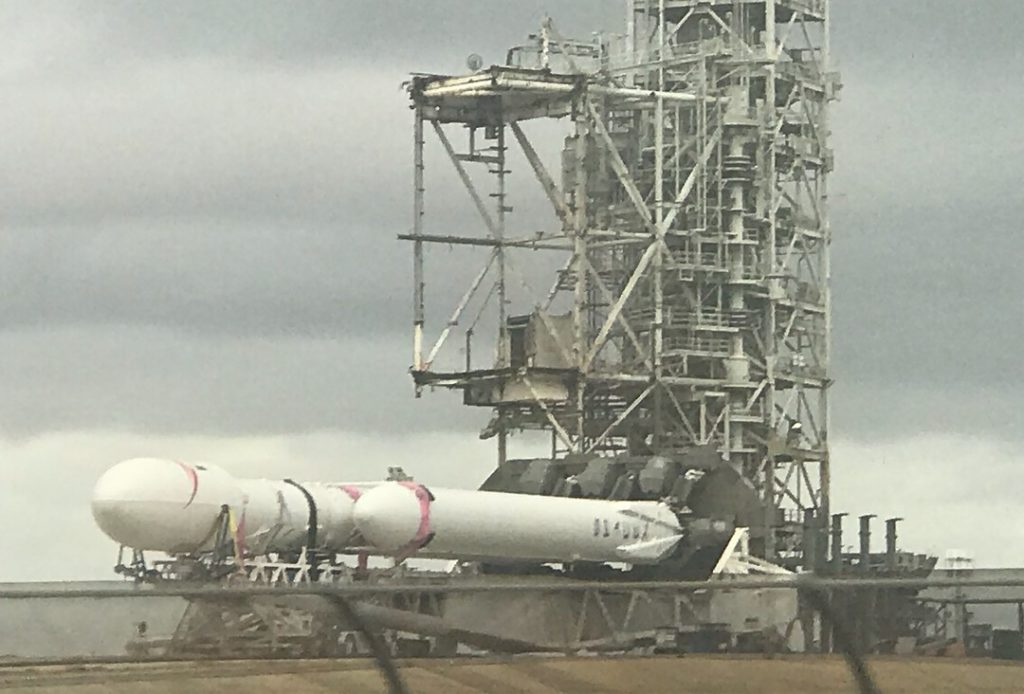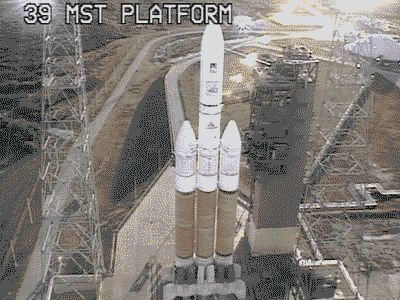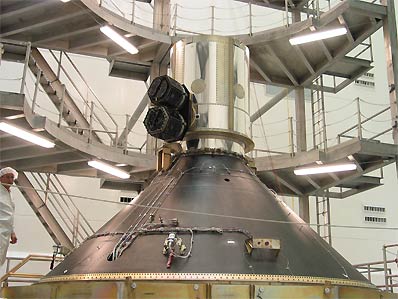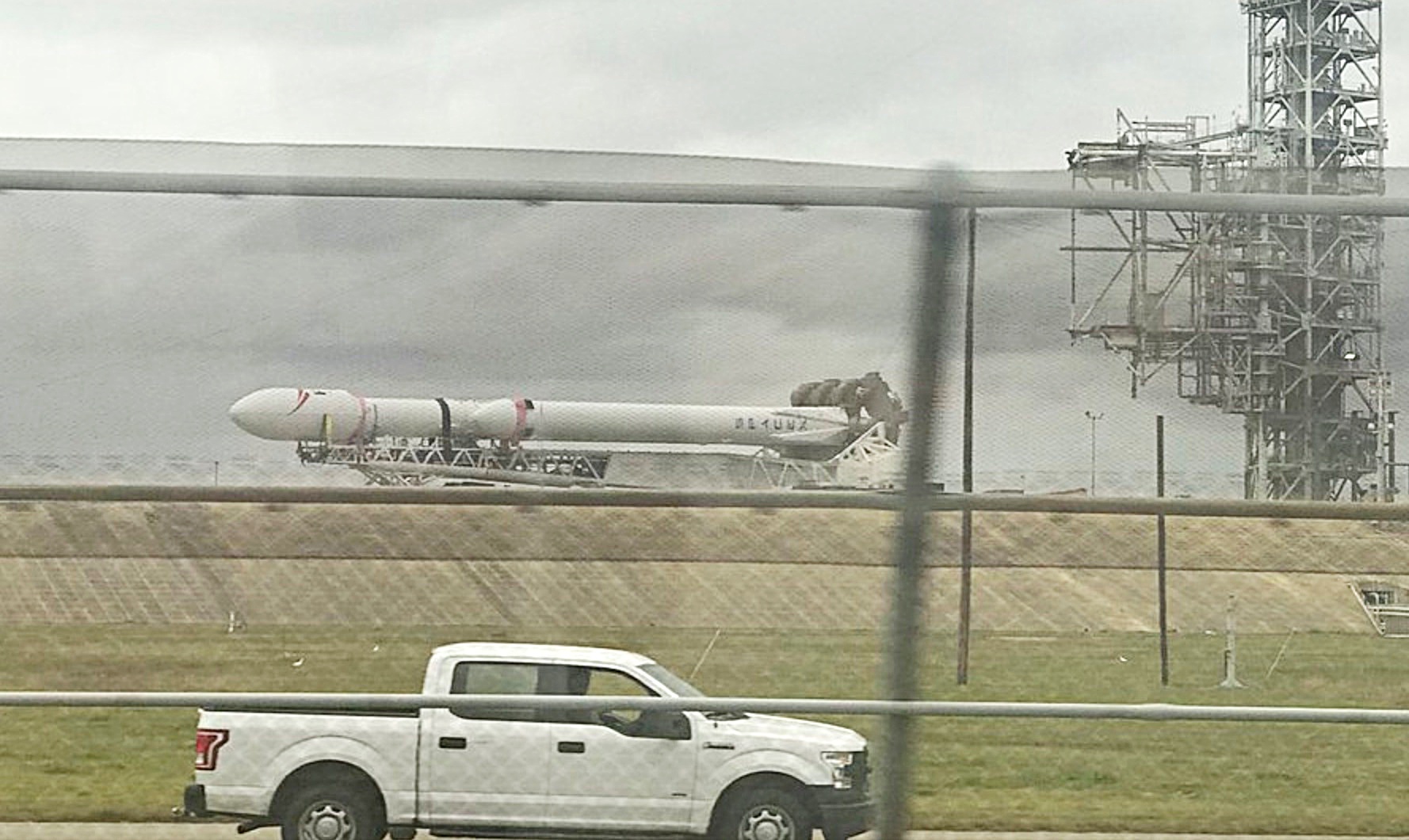
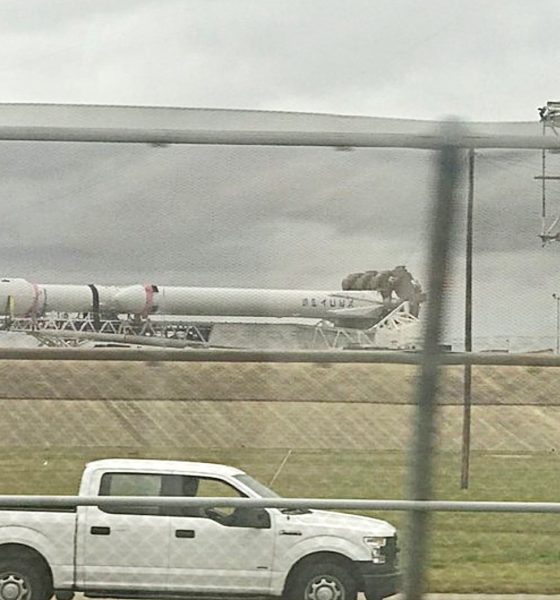
News
SpaceX Falcon Heavy spied on the move ahead of test fire
While touring Florida’s Kennedy Space Center by bus earlier this morning (January 8), several spaceflight fans captured SpaceX’s Falcon Heavy rolling out to Pad 39A for the second time ever. Following a basic fit check and photo opportunity at the launch pad in the last week of 2017, the launch vehicle now appears to be prepped and ready for its first wet dress rehearsal (WDR) and static fire test.
If all goes well during the wet dress rehearsal’s propellant loading tests, an admittedly less than guaranteed outcome, then the WDR will likely translate into a momentous occasion for the massive rocket: the first-ever simultaneous ignition of all three of its integrated first stages and their 27 Merlin 1D engines. While relatively unique to SpaceX, the company has made a habit of testing each and every new Falcon 9 first stage with two full-up static fire ignitions, one at McGregor, Texas and the other at the vehicle’s given launch pad. Following the destructive failure of Falcon 9 during a September 2016 static fire test, SpaceX further upped their cautious procedures by removing the payload for all future static fires, lest the customer request that it remain integrated for the sake of time savings.
Unsurprisingly, no customers have since chosen to bypass SpaceX’s new risk-reducing procedures. Falcon Heavy will clearly be a return to older methods, delineated by the clear presence of the second stage and Tesla Roadster payload at its top, although this decision was almost undoubtedly driven by the fact that the payload is in no real way valuable or even important for the “customer,” SpaceX itself. The Tesla Roadster is more or less a stand-in for the traditional boilerplate satellite (read: hunk of dead metal) often launched during the inaugural flights of new rockets. The best recent example is the 2004 inaugural launch of Boeing’s Delta IV Heavy rocket, similar to Falcon Heavy in the sense that it also features a triple-core first stage. Its first launch carried a payload that was quite literally a 6000 kg (13500 lb) piece of metal paired with a number of sensors used to gather vibrational data.
- A GIF of Delta IV Heavy’s inaugural 2004 launch. The mission was a partial failure. (ULA)
- The mission’s DemoSat, a 6100kg hunk of metal (and two DoD nanosats). (ULA)
Somewhat fittingly, Delta IV Heavy is aiming to conduct its own launch within the next week or so, providing the East Coast with back to back launches of the world’s two largest operational rockets. Still, as SpaceX and Elon Musk have repeatedly mentioned, Falcon Heavy is far more capable than even Delta IV Heavy: while Falcon Heavy is noticeably shorter, narrower, and thinner than Delta, it weighs almost twice as much and will sport nearly 2.5 times the thrust at liftoff.
Delta IV Heavy’s launches are undoubtedly spectacles to behold, particularly given explosive launch procedures, but the vehicle is entirely expendable, whereas Falcon Heavy will attempt recovery of all three of its first stages, and may eventually allow SpaceX to test technology that will enable second stage recovery, as well.
Falcon Heavy will launch a somewhat livelier version of Delta IV Heavy’s boilerplate mass-simulator with the Tesla Roadster, and the main goal is quite clearly to test the vehicle’s ability to send a payload into a trans-Martian injection (TMI) orbit, albeit likely without an actual injection into orbit around Mars at the other end. Even if the payload is somewhat silly, a successful launch to TMI would be the most literal step yet made by the commercial space company along its path to Mars. If this week’s propellant loading and static fire go as planned, launch will likely follow within a week or so – maybe two weeks given the new and unpredictable nature of testing what is more or less a prototype rocket.
Falcon Heavy goes vertical pic.twitter.com/uG1k0WISv1
— Elon Musk (@elonmusk) January 5, 2018
Falcon Heavy can be expected to go vertical at the pad within the next 12-24 hours at most, and static fire will follow soon after. After a highly successful evening photographing the January 7 launch of Falcon 9 with Zuma, Teslarati’s launch photographer Tom Cross will be attempting to photograph the momentous test fire as it happens, and you can follow along live on Teslarati’s Instagram.

News
Tesla is improving Giga Berlin’s free “Giga Train” service for employees
With this initiative, Tesla aims to boost the number of Gigafactory Berlin employees commuting by rail while keeping the shuttle free for all riders.
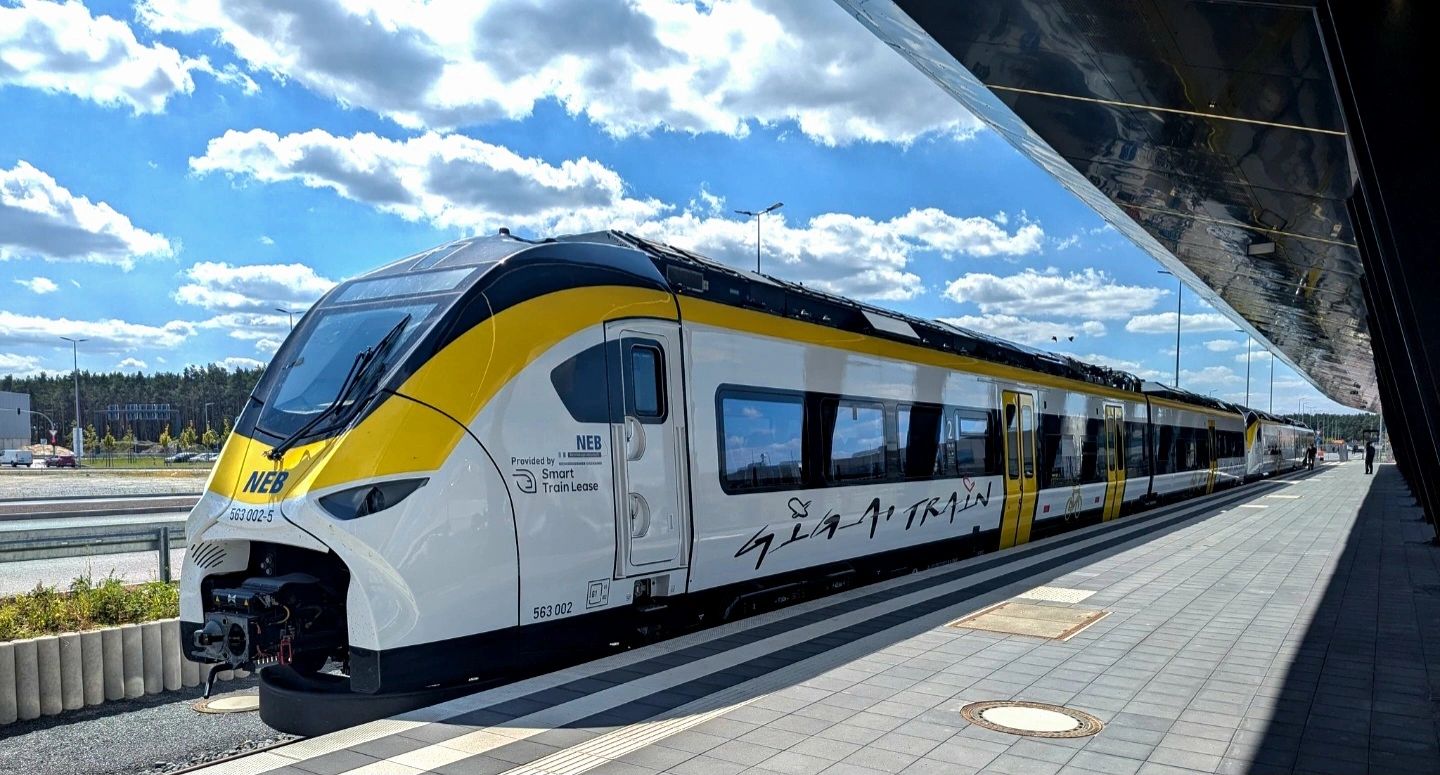
Tesla will expand its factory shuttle service in Germany beginning January 4, adding direct rail trips from Berlin Ostbahnhof to Giga Berlin-Brandenburg in Grünheide.
With this initiative, Tesla aims to boost the number of Gigafactory Berlin employees commuting by rail while keeping the shuttle free for all riders.
New shuttle route
As noted in a report from rbb24, the updated service, which will start January 4, will run between the Berlin Ostbahnhof East Station and the Erkner Station at the Gigafactory Berlin complex. Tesla stated that the timetable mirrors shift changes for the facility’s employees, and similar to before, the service will be completely free. The train will offer six direct trips per day as well.
“The service includes six daily trips, which also cover our shift times. The trains will run between Berlin Ostbahnhof (with a stop at Ostkreuz) and Erkner station to the Gigafactory,” Tesla Germany stated.
Even with construction continuing at Fangschleuse and Köpenick stations, the company said the route has been optimized to maintain a predictable 35-minute travel time. The update follows earlier phases of Tesla’s “Giga Train” program, which initially connected Erkner to the factory grounds before expanding to Berlin-Lichtenberg.
Tesla pushes for majority rail commuting
Tesla began production at Grünheide in March 2022, and the factory’s workforce has since grown to around 11,500 employees, with an estimated 60% commuting from Berlin. The facility produces the Model Y, Tesla’s best-selling vehicle, for both Germany and other territories.
The company has repeatedly emphasized its goal of having more than half its staff use public transportation rather than cars, positioning the shuttle as a key part of that initiative. In keeping with the factory’s sustainability focus, Tesla continues to allow even non-employees to ride the shuttle free of charge, making it a broader mobility option for the area.
News
Tesla Model 3 and Model Y dominate China’s real-world efficiency tests
The Tesla Model 3 posted 20.8 kWh/100 km while the Model Y followed closely at 21.8 kWh/100 km.
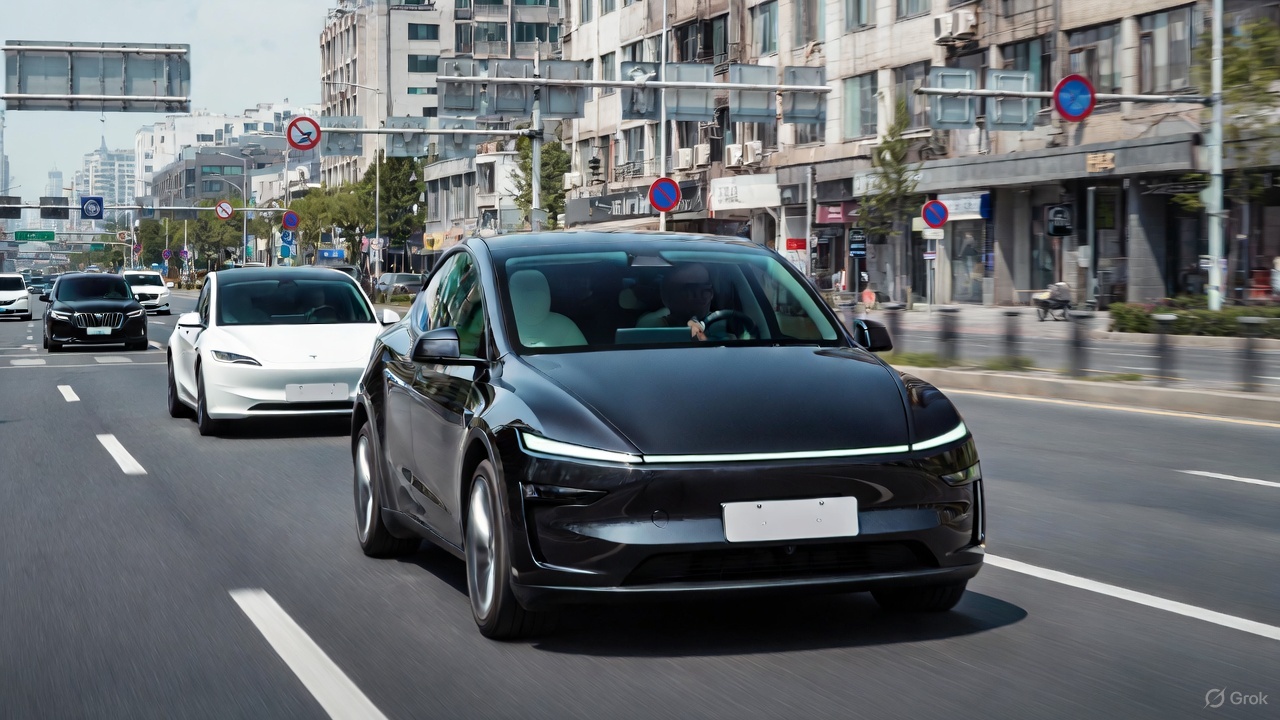
Tesla’s Model 3 and Model Y once again led the field in a new real-world energy-consumption test conducted by China’s Autohome, outperforming numerous rival electric vehicles in controlled conditions.
The results, which placed both Teslas in the top two spots, prompted Xiaomi CEO Lei Jun to acknowledge Tesla’s efficiency advantage while noting that his company’s vehicles will continue refining its own models to close the gap.
Tesla secures top efficiency results
Autohome’s evaluation placed all vehicles under identical conditions, such as a full 375-kg load, cabin temperature fixed at 24°C on automatic climate control, and a steady cruising speed of 120 km/h. In this environment, the Tesla Model 3 posted 20.8 kWh/100 km while the Model Y followed closely at 21.8 kWh/100 km, as noted in a Sina News report.
These figures positioned Tesla’s vehicles firmly at the top of the ranking and highlighted their continued leadership in long-range efficiency. The test also highlighted how drivetrain optimization, software management, and aerodynamic profiles remain key differentiators in high-speed, cold-weather scenarios where many electric cars struggle to maintain low consumption.
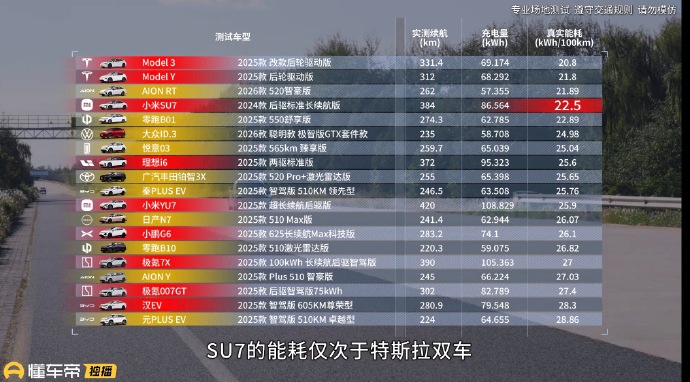
Xiaomi’s Lei Jun pledges to continue learning from Tesla
Following the results, Xiaomi CEO Lei Jun noted that the Xiaomi SU7 actually performed well overall but naturally consumed more energy due to its larger C-segment footprint and higher specification. He reiterated that factors such as size and weight contributed to the difference in real-world consumption compared to Tesla. Still, the executive noted that Xiaomi will continue to learn from the veteran EV maker.
“The Xiaomi SU7’s energy consumption performance is also very good; you can take a closer look. The fact that its test results are weaker than Tesla’s is partly due to objective reasons: the Xiaomi SU7 is a C-segment car, larger and with higher specifications, making it heavier and naturally increasing energy consumption. Of course, we will continue to learn from Tesla and further optimize its energy consumption performance!” Lei Jun wrote in a post on Weibo.
Lei Jun has repeatedly described Tesla as the global benchmark for EV efficiency, previously stating that Xiaomi may require three to five years to match its leadership. He has also been very supportive of FSD, even testing the system in the United States.
Elon Musk
Elon Musk reveals what will make Optimus’ ridiculous production targets feasible
Musk recent post suggests that Tesla has a plan to attain Optimus’ production goals.
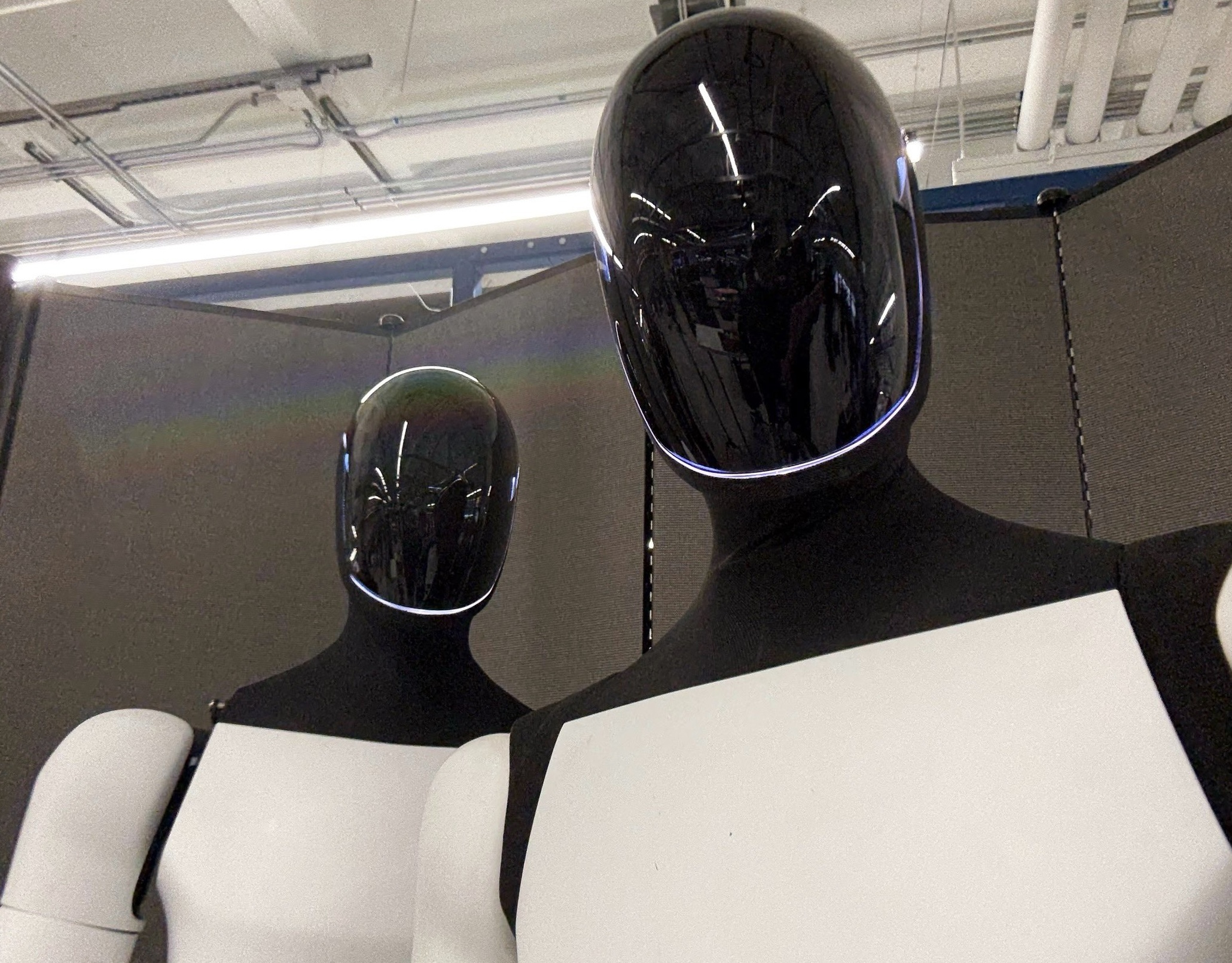
Elon Musk subtly teased Tesla’s strategy to achieve Optimus’ insane production volume targets. The CEO has shared his predictions about Optimus’ volume, and they are so ambitious that one would mistake them for science fiction.
Musk’s recent post on X, however, suggests that Tesla has a plan to attain Optimus’ production goals.
The highest volume product
Elon Musk has been pretty clear about the idea of Optimus being Tesla’s highest-volume product. During the Tesla 2025 Annual Shareholder Meeting, Musk stated that the humanoid robot will see “the fastest production ramp of any product of any large complex manufactured product ever,” starting with a one-million-per-year line at the Fremont Factory.
Following this, Musk stated that Giga Texas will receive a 10 million-per-year unit Optimus line. But even at this level, the Optimus ramp is just beginning, as the production of the humanoid robot will only accelerate from there. At some point, the CEO stated that a Mars location could even have a 100 million-unit-per-year production line, resulting in up to a billion Optimus robots being produced per year.
Self-replication is key
During the weekend, Musk posted a short message that hinted at Tesla’s Optimus strategy. “Optimus will be the Von Neumann probe,” the CEO wrote in his post. This short comment suggests that Tesla will not be relying on traditional production systems to make Optimus. The company probably won’t even hire humans to produce the humanoid robot at one point. Instead, Optimus robots could simply produce other Optimus robots, allowing them to self-replicate.
The Von Neumann is a hypothetical self-replicating spacecraft proposed by the mathematician and physicist John von Neumann in the 1940s–1950s. The hypothetical machine in the concept would be able to travel to a new star system or location, land, mine, and extract raw materials from planets, asteroids, and moons as needed, use those materials to manufacture copies of itself, and launch the new copies toward other star systems.
If Optimus could pull off this ambitious target, the humanoid robot would indeed be the highest volume product ever created. It could, as Musk predicted, really change the world.
